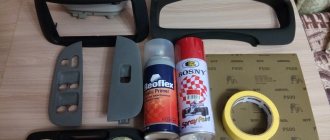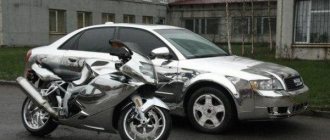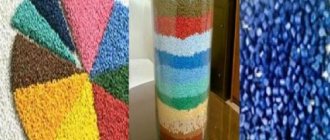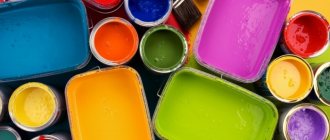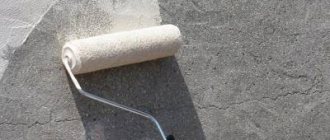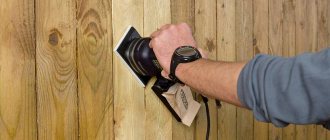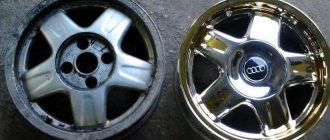Chrome paint: features, varieties, composition
Initially, chrome plating technology was associated with applying a thin layer of metal to the surface of an exclusively metal product. Until now, the industry invariably uses a special electrical method for this purpose. However, today an alternative method has emerged to give objects made of various materials a mirror-metal appearance. This is painted using chrome paint.
Peculiarities
Mirror paint achieves its effect against a thin, durable coating with highly reflective properties. Such properties are due to the fine metal powder included in its composition. In addition to lighting characteristics, the coloring composition is characterized by high heat resistance.
In addition, depending on the filler, it can give the finished coating different shades - black, matte, golden, etc. Special varnish components evenly distribute the material over the surface and enhance the mirror effect of the coating, which differs little from its galvanic counterpart.
Chrome and gold plating Source kraski-net.ru
See also: Catalog of companies that specialize in paints and varnishes and related work
Varieties
There are two main categories of coloring compositions of this type:
- One-component.
- Two-component.
The first mainly includes chrome paint in cans. Despite the ease of use and widespread use among amateurs, paint compositions of this type are not suitable for all types of work. Among their obvious advantages are:
- Ready for use. To use the product, simply shake and spray in the required amount onto a given area.
- Versatility in material. Paints metal, glass, wood and plastic surfaces equally well.
- No need to use special equipment. The can sprays itself - without additional devices. It is easy to store, transport and use almost anywhere.
- Wide range of shades. The dye is ideally stored in a pressurized container.
Chrome paint in cans Source prom.st
However, chrome in a can is also not without its disadvantages:
- It is not always possible to achieve a mirror effect. Often the result is far from ideal and does not look like real chrome.
- Painting technology is quite complex. To get a real chrome coating, you need to carefully prepare the surface and protect the room from temperature changes and air movements. This is difficult to do at home.
- Poor adhesion of the composition to the structure of the material due to the very rapid hardening of the base.
- The savings in using spray cans only appear when painting a small area. Using them for large surfaces is no cheaper than renting professional equipment.
- Paints of the same shade from different manufacturers may differ in tone.
Chrome plating from a can Source gidpokraske.ru
How is dyeing done?
An important stage is preparatory work with the surface. This is especially true for glossy products rather than matte ones. Even small defects can be noticeable on smooth materials; this will only harm the effect of chrome. The room must be completely free of dust during processing. Only after the necessary conditions have been met can you proceed to subsequent processing.
Liquid acrylic compositions (liquid chrome) have their own positive qualities. They are heat-resistant, able to withstand any chemical exposure, moisture in any quantity. Unlike powder compositions, liquid acrylic materials can be applied to parts of parts, creating multi-colored chrome-effect paint designs.
The workflow itself is described as follows:
- The part is first primed and then covered with a layer of black dye. The color may be different, it does not play an important role.
- Polishing is carried out after the initial layer has dried.
- Using an aerosol can, we apply paint with a chrome effect; there may be several layers.
- Each chrome layer must dry thoroughly before applying the next one.
- The final stage is varnish treatment.
Powder paint Bosny belongs to another type of composition. The elements that are included in its composition provide a chrome effect and increased durability of the coating. This option is ideal for disks.
The painting process is not particularly problematic and can be easily done in a garage. There will be four stages in total: thorough cleaning of parts, primer coating, drying, and application of powder paint.
How to paint with chrome paint correctly (2 videos)
Options for using paint (34 photos)
Basic shades of chrome paint
Aluminum powder in the colorant is responsible for creating the classic silver shade. To obtain other colors, chrome paint is saturated with the following ingredients:
- Gilding is crushed metal particles with a yellow tint.
- Black – aluminum powder mixed with black pigment.
- Other colors - to give a characteristic shade, dyes of the corresponding color are added to the composition.
In addition, you can give the desired shade to the finished coating by tinting the varnish, which is applied after the main layer of chrome paint has dried.
Characteristics of chrome chameleon
The thermochromic variety of chrome paint, which belongs to this group, is one of the interesting compositions with unusual properties. The material is known for its ability to change color when the surface is exposed to a certain temperature. For example, matte chrome and golden chrome appear. But at the same time the property of heat resistance is preserved.
The number of colors and shades is practically unlimited. The coating can become either matte or transparent. Nickel often becomes an indispensable component of compositions.
There are two methods for classifying compounds that give the chromium effect. It is carried out depending on the process of color change, as well as on the reversibility of this process. The first characteristic allows us to distinguish three varieties:
- Initially transparent coatings that acquire a different tone with chrome when the temperature in the room deviates from the norm, up or down.
- Other types of paints, on the contrary, become transparent under the same conditions.
- And there are compositions like chrome effect, where colors can have different states, change from one shade to another.
Thermochromic paint-chrome can be reversible or irreversible. Reversible compounds can change color many times, while irreversible compounds change color only once.
High cost and labor-intensive painting process are the main reasons why such compositions have not gained popularity. Paints with a “chameleon” effect are more often used when creating souvenir products. In such cases, chrome paints are irreplaceable.
TOP manufacturers
Chrome mirror paint for metal is currently manufactured by the following popular manufacturers:
- RUSH Power. Budget paint with optimal spraying in 1 layer. Used for graffiti.
- Bosny CHROME. Inexpensive product for small metal products. A final varnish coating is required.
- Chrome Effect. Mid-priced paint option. Popular among car owners. Maximum chrome effect.
Painting recommendations
It is better to apply liquid chrome to any suitable surface, following a series of recommendations:
- Reliability, durability of results and durability are guaranteed by paints only from trusted manufacturers.
- To create a high-quality, uniform coating without smudges, experience and skills are required. Therefore, before painting the product, it is better to practice well.
- Chrome paint is not recommended by manufacturers for application to soft plastic items.
- The varnish applied after painting must correspond to the properties of the coating. Otherwise, it may peel off.
The wide variety of chrome paint types on the market allows even an inexperienced user to successfully perform chrome plating if necessary. However, when painting complex interior elements or parts, it is better to seek help from specialists.
The effect of chromium compounds on the body
Hexavalent chromium is usually formed as a result of industrial processes. Inhalation of chromium(VI) in workers has been shown to cause lung cancer. Chromium(VI) also causes lung cancer in animals. An increase in stomach tumors has been observed in humans and animals exposed to chromium(VI) in drinking water. In addition, it is toxic to the respiratory system, kidneys, liver, skin and eyes.
Effects of chromium on the respiratory system
When inhaled, chromium compounds cause respiratory irritation, leading to respiratory irritation and cancer of the lungs, nose, or sinuses. The dose, duration of exposure, and the specific compound may determine the adverse health effects of chromium.
Effects of chromium on skin
Skin exposure to chromium causes irritant and allergic contact dermatitis. Irritant dermatitis is associated with the direct cytotoxic properties of chromium, while allergic contact dermatitis is an inflammatory reaction mediated by the immune system. Allergic contact dermatitis is a cellular immune response that occurs in two stages. In the first stage (induction), chromium is absorbed into the skin and triggers the next stage - the immune response (sensitization). You can read more about occupational skin diseases here.
Effect of chromium on internal organs
Nephron damage has been reported in workers handling chromium. Severe poisoning can lead to acute tubular necrosis and acute renal failure.
Cr(VI) causes severe liver damage in four out of five workers exposed to chromium trioxide in the chrome plating industry. Reported liver effects include liver cell impairment and necrosis.
Studies have shown that chrome plant workers exposed to a mixture of insoluble chromite ore containing Cr(III) and soluble Cr(VI) in the form of sodium chromate and dichromate developed gastrointestinal ulcers.
Case reports of human deaths after ingestion of Cr(VI) compounds describe cardiovascular effects as part of the effects leading to death.
Chromium is often released during welding, which is itself dangerous. One study found that wives of stainless steel welders were at higher risk of miscarriage.
Briefly about the main thing
Modern chrome paint consists of an epoxy or acrylic base, metal powder and colored pigment - standard, gold, black, chameleon, etc. There are two types of coloring compounds:
- With one component.
- With two components.
The first ones are made in cans. They are used most often, as they do not require special skills in dyeing technology. The latter are prepared in a special way before use and sprayed using a spray gun. Most often they are used to paint plastic and metal surfaces. Painting should be carried out according to technology in compliance with the recommendations.
Ratings 0
How to paint
Professional chrome effect coating in standard packaging
All paintwork materials with the effect of a chrome-plated or nickel-plated surface on the market can be divided into two general categories:
- nitro paint in cans;
- paint in cans.
It would seem that both packages contain paints and varnishes, only the method of application is different. But it turns out there is a difference and it is significant. First of all, the price of the can is higher than the cost of the contents of the can in terms of the same number of grams.
In addition, coatings sold in cans vaguely resemble a chrome surface, while materials sold in cans are intended for professional use and guarantee greater aesthetic similarity.
Important: When deciding to purchase chrome paint in cans, you need to remember that applying such paints and varnishes is impractical on large substrates. In addition, the technology for working with shiny paint from a can is complex. And only if all technological requirements are followed can you expect satisfactory quality of the finished result.
On the market, paints with the effect of a shiny metal surface are presented in one-component and two-component compositions. One-component compositions are, as a rule, what is pumped into cans and some types of inexpensive nitro paint in cans.
Two-component compositions are paintwork materials based on acrylic or epoxy. In this case, the method of preparing the coating for use will take some time, but the result will be an order of magnitude better than when working with one-component analogues. The essence of paint preparation is that the base is mixed with a hardener until a homogeneous consistency is obtained.
Two-component paints form a dense, wear-resistant coating on the surface being treated. After the paint has dried, varnish must be applied. The varnish in this case will perform a protective function and prevent premature destruction of the paint.
Features of using chrome paints
Application of chrome-look paints and varnishes for decorating car hubcaps
The problem with using chrome paint from a can is that it dries super quickly. As a result, the coating is sprayed and falls on the base, but does not have time to adhere to it. As a result, the layer of dried paint is peeled off with a fingernail.
Another important point is that quick-drying paints and varnishes must be applied correctly.
The application technology is as follows:
- carefully prepare the base and apply black base primer or nitro paint to it;
- coat the base with varnish and dry until complete polymerization for several days;
- To achieve an optimal result, polish the coating;
- Apply chrome effect paint directly to the gloss;
- After this, we apply another layer of varnish, which will perform a protective function.
In the photo - an optics reflector painted with spray paint
A similar technology is applicable to the use of paints and varnishes from a can. But in this case, you need to take care of selecting the appropriate tool.
Important: The recommendation regarding laying black primer is not accidental, since by laying light primer, you will get a coating that is very different from chrome and nickel-plated coatings.
Review of paint by brand and manufacturer
Let's look at what chrome paints and varnishes can be purchased in most specialized stores and car markets.
- Let's start with inexpensive RUSH Power , the price of which on average does not exceed 300 rubles. The paint sprays well, even with one layer it shows good coverage.
In the photo - products of the RUSH Power brand
The only problem is the very distant similarity between the painted surface and real chrome-plated or nickel-plated metal.
Spray cans of this brand are intended not so much for decorating vehicles, but for graffiti and other areas of street art.
This is also facilitated by the increased penetrating ability of the material, which is well absorbed into low-density surfaces.
- Bosny CHROME - acrylic aerosol paint in cans is also a relatively inexpensive way to update a nickel or chrome surface.
Relatively inexpensive paint Bosny CHROME
It is not advisable to use such paints and varnishes on large surfaces, as the coating quickly peels off. The problem of low strength of paintwork materials can be solved by applying a couple of protective layers of varnish from the same manufacturer.
- Chrome Effect - this paint is by far the most popular among domestic car enthusiasts.
Closest resemblance to real chrome
This is due to the optimal combination of price and quality. Despite the fact that the cans of this brand are not the cheapest, it is with their help that you can get the most realistic chrome coating.
Tip: Before the advent of chrome coatings, surfaces were decorated as follows. The surface was prepared for painting, and a transparent varnish was applied to it. Before the varnish dried, the layer was generously sprinkled with aluminum powder.
Then we had to wait for the varnish coating to completely polymerize. After this, it was possible to begin gentle grinding and polishing of the coating. Immediately after polishing was completed, a finishing layer of clear varnish was applied.
